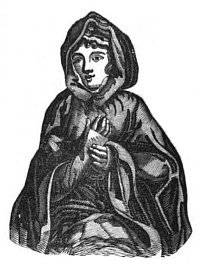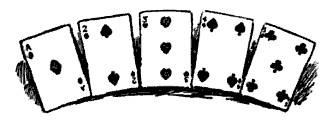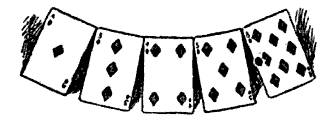Abraham Newland slept in the Bank of England every night for 25 years.
He retired as chief cashier in 1807.
Abraham Newland slept in the Bank of England every night for 25 years.
He retired as chief cashier in 1807.

On Feb. 2, 1799, 42-year-old Elizabeth Woodcock was returning from market to her home in Cambridge when she was overcome with fatigue and lay down in a field. A heavy storm had overtaken her, and she came to her senses under six feet of snow, in which she remained buried for eight days.
Her cries went unheard, but she managed to tie a handkerchief to a stick and thrust it through the snow, where a passing farmer finally noticed it and went for help. When shepherd John Stittle pulled her free, she said, “I have been here a long time.” “Yes,” he said, “since Saturday.” “Ay, Saturday week,” she replied. “I have heard the bells go two Sundays for church.” She’d been lying only half a mile from her home.
Woodcock lost her toes to frostbite and lingered until the following July, when she died. “We are sorry to add,” notes the Gentleman’s Magazine, “that too free indulgence in spirituous liquor is supposed to have been the cause both of the accident which befel Elizabeth Woodcock, and its fatal consequences.”
In November 2006, 23-year-old David Fearn of Staffordshire changed his name to James Dr. No From Russia With Love Goldfinger Thunderball You Only Live Twice On Her Majesty’s Secret Service Diamonds Are Forever Live and Let Die The Man With the Golden Gun The Spy Who Loved Me Moonraker For Your Eyes Only Octopussy A View to a Kill The Living Daylights Licence to Kill GoldenEye Tomorrow Never Dies The World Is Not Enough Die Another Day Casino Royale Bond.
It’s the longest name in deed poll history.
vaccimulgence
n. the milking of cows
Memorize these facts:

With them you can find any two-digit cube root. For example, what’s the cube root of 12,167?
1. Express the number in six digits (012167). Take the first three digits (012) and compare them to the blue cubes above. Find the largest cube that’s less than your three-digit string, and write down its root. Here, 012 is between 8 and 27, so we write down 2.
2. Match the last digit of the number (7) to the last digit of a blue cube above (here, 27). Write down the root of that number (3).
That’s it. Put the two digits together (23) and that’s your root: 233 = 12,167.
This works for any perfect cube between 1,000 and 1 million.
In January 1819, in the neighbourhood of Burntisland, a gentleman completely succeeded in taming a Seal; its singularities attracted the curiosity of strangers daily. It appeared to possess all the sagacity of the dog, and lived in its master’s house, and eat from his hand. In his fishing excursions, this gentleman generally took with him, upon which occasions it afforded no small entertainment. When thrown into the water, it would follow for miles the track of the boat, and although thrust back by the oars, it never relinquished its purpose. Indeed it struggled so hard to regain its seat, that one would imagine its fondness for its master had entirely overcome the natural predilection for its native element.
— Pierce Egan, Sporting Anecdotes, Original and Selected, 1822
Pliny, Petronius, and Dion Cassius all tell of a flexible glass invented in the first century A.D. Dion says a man displayed a glass cup to Tiberius and dashed it to the ground. The vessel bent rather than breaking, and the inventor hammered it back into its original form.
Was it aluminum? We’ll never know — the emperor had the man killed lest the new metal devalue his gold.
Her eyes are velvet, soft and fine,
That none can antedate;
Her hair’s fine strands seem all divine,
Her form is, oh! so

Her teeth, like driven snow, are white;
And when she wills to blush
There is no tint can equal quite
Her rounded cheek’s fine

Could I but hold a hand like that
Just once, I would not care
If afterwards I stood quite pat
Forever, on a

— Thomas Lansing Masson
In January 1950, senator Victor Biaka-Boda of French West Africa was touring his homeland when his car broke down in a region with a history of cannibalism.
His charred bones were found in November. Apparently he had been eaten by his constituents.
“If the triangles made a god, they would give him three sides.” — Montesquieu